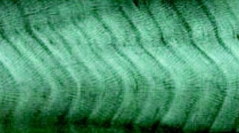

 Comptes Rendus Palevol
3 (6-7) - Pages 453-467
Comptes Rendus Palevol
3 (6-7) - Pages 453-467Coral reefs constitute real oasis sheltering for about one third of the identified fishes, representing a major advantage for the economy and tourism of many tropical countries. However it is paradoxical to notice that their formation at the cellular level or even at the scale of the organism is still poorly known. Effectively, biomineralisation, the process that is at the basis of their edification, is always the subject of numerous researches. Two combined mechanisms lead to the formation of a biomineral, the synthesis/secretion of macromolecules referred to as ‘organic matrix’, and the transport of ions (calcium, bicarbonates and protons in the case of calcification) to the mineralising site. This review shows a view of the works carried out on biomineralisation in scleractinian corals, including some aspects on the control of calcification by environmental parameters. It also gives insights into the biological basis of the use of coral skeletons as environmental archives in palaeo-oceanography.
Coral, calcification, biomineralisation, ion carrier, calcium channel, Ca 2+ –ATPase, organic matrix, symbiosis